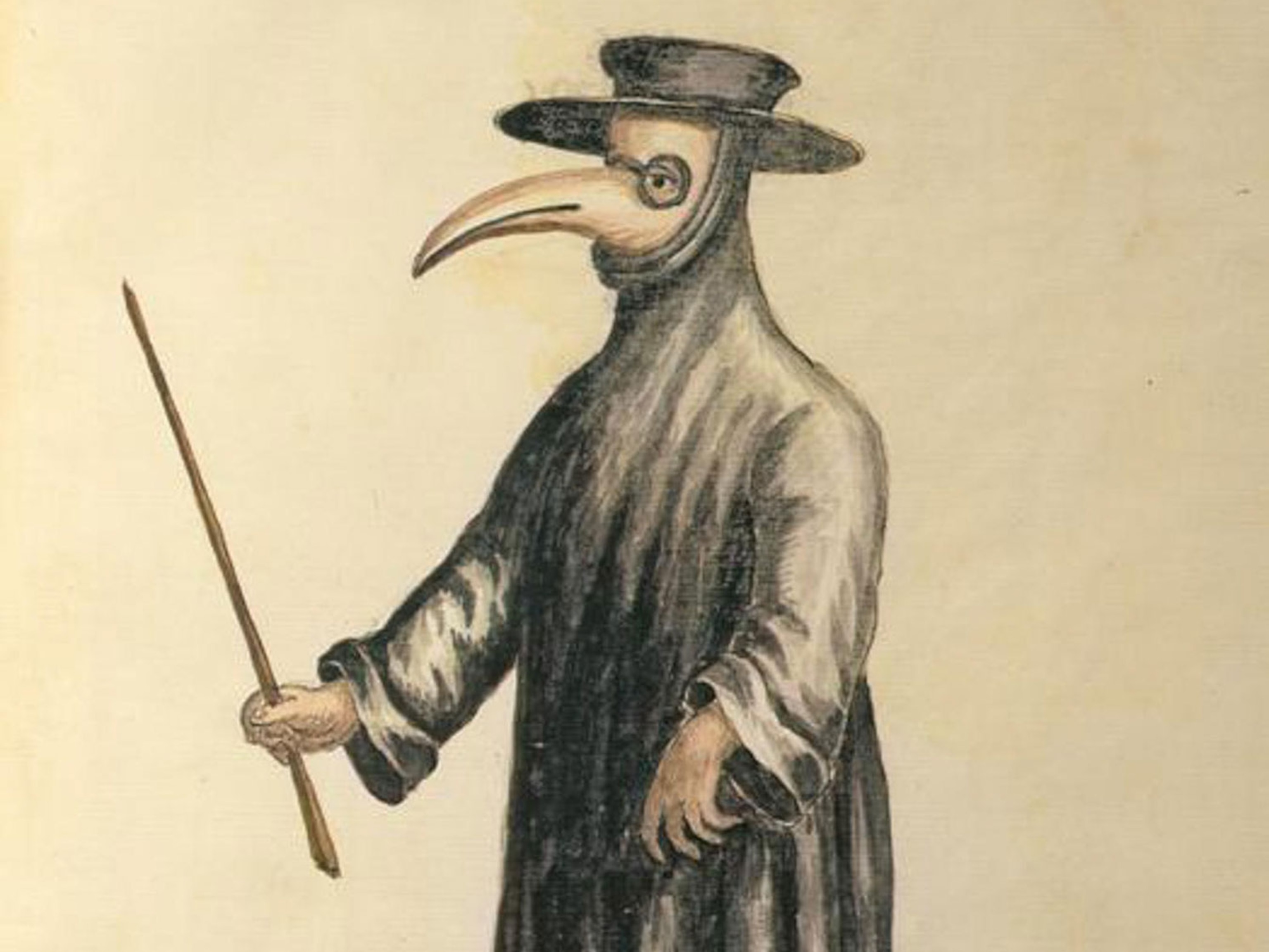
What 'airborne coronavirus' means, and how to protect yourself
The COVID-19 pandemic has revived a decades-old debate about how respiratory diseases travel—which affects the safety practices experts recommend.
Read this sentence aloud: With every passing word, an expanding blast of spittle spews from your mouth—the more emphatic the speech, the greater the spray.
This mouth-made mist is the subject of a great debate about how the coronavirus hitches a ride from person to person. Virus-riddled globs can be inhaled, or even land in the eyes, potentially sparking infections in others. But for respiratory diseases like coronavirus, it’s long been thought these droplets are so large they will fall rapidly to the ground, inspiring public health recommendations such as cleaning surfaces and keeping six feet of social distance.
Other scientists, however, have become increasingly concerned that the novel coronavirus spreads through a more insidious route—as an airborne pathogen. Every sneeze, cough, spoken word, or even exhaled breath expels droplets in a continuum of sizes. The worry is whether the tiniest—called aerosols—can harbor the SARS-CoV-2 virus and allow it to linger or float across a room, causing new infections.
In July, 239 scientists published a commentary in Clinical Infectious Diseases calling for the recognition of airborne transmission for COVID-19 based on a series of case reports and lab studies. Though debate remains over whether airborne coronavirus transmission happens outside of hospital settings, proponents say the public risks are too dire to wait for more research. They propose additions to health guidance, such as improving ventilation, and some are working on models to predict the hazards of this route of infection.
One example involves a pair of methods that have been used for decades to track pollutants in indoor spaces and the risk of infectious disease. The model can calculate risk for multiple scenarios—including a classroom, campus, subway, bus, choir, demonstration, and outdoors—allowing users to tweak a variety of variables, including the amount of mask wearing, group size, and activity. The results can provide a valuable comparison of relative risk, says Jose-Luis Jimenez, an atmospheric chemist at the University of Colorado Boulder who led the project. (Use this interactive model to measure the risk of airborne COVID-19 in your office, classroom, or bus ride.)
But Jimenez and other proponents of aerosol transmission are still squaring off with the traditionalists who aren’t ready to abandon the view that the most worrisome route of coronavirus spread is through large respiratory droplets at close proximity. That classic view argues that aerosol transmission appears to be the exception rather than the rule. In response to the Clinical Infectious Diseases commentary, the World Health Organization acknowledged that airborne routes cannot be ruled out for some indoor incidents—but transmission through heavier droplets or contaminated surfaces could also explain these cases.
National Geographic dives into the body of evidence with an array of scientists to determine what this debate means for you, and how we all should protect ourselves.
What’s in a name?
Most scientists define aerosols as particles or liquid droplets that float through the air, while large droplets fall like projectiles. Some groups—including the WHO—draw a firm line with this spittle based on size. Aerosols are smaller than five to 10 microns, they say, and anything larger is considered a rapidly falling droplet. (Here’s what you need to know about public toilets and COVID-19.)
However, proponents of airborne transmission argue that this division is hazy. For instance, a liquid drop five microns across can actually float for about half an hour. “Nature doesn’t create cutoff points,” says Lidia Morawska, an aerosol physicist at the Queensland University of Technology in Australia and an author of the Clinical Infectious Diseases letter.
Even for the flu, which we’ve studied for decades, we still don’t know how much is transmitted by aerosols or by touching contaminated objects.Linsey Marr, Virginia Tech
An intense sneeze can launch a high-speed cloud of spit—with droplets of all sizes—as far as 27 feet. The distance traveled depends on humidity levels, wafting currents, temperature, and static electricity. Differences in mass can also help explain why pollen, which is aerodynamically buoyant, can travel for miles despite being much larger than the wet aerosols made by your sneezes.
For health-care workers, the simple division of airborne spread through aerosols versus transmission from larger droplets propelled through the air has had important implications for safety measures, says Daniel Diekema, the director of the infectious disease division of the University of Iowa Healthcare. "Airborne is reserved for a small list of organisms that we feel there’s transmission risk for anyone who shares the same air, even over long distances or long periods of time," he says.
With these diseases, medical centers use extra precautions, such as placing patients in specially ventilated rooms and requiring health-care workers to wear N95 masks, which allow only 5 percent of inhaled aerosols through. That’s opposed to surgical masks, which are the baseline used in many hospitals. Surgical masks can allow anywhere from one to 76 percent of tiny particulates to pass, according to a study of masks cleared for use by the U.S. Food and Drug Administration. (Cloth masks also have a wide range of effectiveness, as a recent study on a small group of people shows that some can filter out nearly as much as an N95, but bandanas and knitted fleece let most drops through.)
Common medical procedures used with COVID-19 patients, such as mechanical ventilation, are also known to create higher concentrations of hazardous aerosols than talking or coughing. But if coronavirus is abundantly aerosolized outside of hospital settings, it would mean that surgical and cloth masks may not provide adequate protection when people spend extended periods in close proximity indoors. The prospect would also raise questions about social distancing guidelines, and whether public places that are poorly ventilated and without openable windows—such as some schools and offices—would need to upgrade HVAC systems to increase airflow with the outdoors, install additional filtration, or purchase portable air purifiers.
The connotation to people is that, Well, if I simply walk by a person on the street who is exhaling, I’m going to get sick. That, I think, is both an inaccurate and unduly fearsome kind of message.Michael Klompas, Brigham and Women's Hospital
Another concern is that airborne contaminants hold a certain aura of fear for the general public. "If you just say … this is an aerosol-transmitted virus, the connotation to people is that, Well, if I simply walk by a person on the street who is exhaling, I’m going to get sick," says Michael Klompas, a hospital epidemiologist at Brigham and Women's Hospital in Boston. "That, I think, is both an inaccurate and unduly fearsome kind of message."
Evidence suggests that SARS-CoV-2 can't spread with this amount of ease, so when scientists say "airborne," it doesn't necessarily mean what most people think.
The cases for and against airborne coronavirus
One big question with airborne coronavirus is whether long periods of time in poorly ventilated rooms would allow aerosol levels to build. It’s similar to adding food coloring to a fish tank versus the ocean, says Angela Rasmussen, a virologist at Columbia’s Mailman School of Public Health. Just a few drops will disperse in both environments, but if you continue adding dye, only the fish tank will eventually shift its hue.
Hints of this type of transmission have occurred with SARS-CoV-2. In a restaurant in Guangzhou, China, people sitting at three neighboring tables fell ill with COVID-19. Video records suggest that none of these people had direct contact with each other, and reconstructions conclude that a wallbound air conditioner may have aided transmission through the air. At a Buddhist temple in China, 24 of 67 worshippers caught the coronavirus while traveling on a bus with a sick colleague—a far greater infection rate than those who traveled in other vehicles to the event. Only one passenger sitting near the bus windows or door was infected, hinting that ventilation offered some protection.
But in all of these case studies, aerosol transport did not happen over long distances, which bucks one of the classic conditions for airborne transmission. Chickenpox, for example, is thought to spread down long hallways or across windows of adjacent rooms. Measles can infect people for two hours after someone with the disease leaves a room.
So if coronavirus is airborne, why doesn’t it behave like chickenpox or measles? Compared to most other respiratory diseases, measles is thought to require very little virus from one person to seed an infection in another, and people with measles likely spew enormous amounts.
Measles is the champion.
It’s the Mohammad Ali of virusesJorge Salinas, Carver College of Medicine, University of Iowa
“Measles is the champion. It’s the Mohammad Ali of viruses,” says Jorge Salinas, hospital epidemiologist at the University of Iowa’s Carver College of Medicine.
The SARS-CoV-2 coronavirus, on the other hand, may require inhaling a much higher dose to seed a new case. This may mean that coronavirus mist needs sufficient time to become more concentrated and therefore more hazardous—though a modeling study published on July 27 reported that few people with mild or moderate symptoms would produce a high enough amount of virus to pose a risk in poorly ventilated places if breathing normally. The risk increases with coughing.
The biggest unknown is what happens indoors in what might be dubbed “the middle distance.” If the itty-bitty droplets build in the air, there might be risks beyond six feet, but infectious coronavirus doesn’t appear to be flying down long hallways.
Rasmussen says the evidence presented in the relevant case studies strongly suggests some people catch the coronavirus without “getting a direct blast” of respiratory droplets from talking face-to-face.
“But at what point does the number of virus-containing particles in the air exceed that threshold that you need to hit to get infected?” Rasmussen asks. “That’s really an open question.”
That’s also why none of these studies can completely rule out classic transmission through respiratory droplets. One of the most widely-discussed examples of potential airborne coronavirus involves a 2.5-hour choir practice in Skagit County in Washington State. Singing, public health officials concluded, may have led to aerosol transmission of the coronavirus. But choir members also reported breaking into smaller groups where they sat next to each other, and some attendees shared snacks during a short break.
“It’s really tricky to try to determine this in the real world,” Rasmussen says.
It’s also unclear how long viable coronavirus virus lingers in the air. Laboratory experiments suggest at least three hours, but the WHO notes these aerosols were artificially generated and don't reflect natural human coughs. Infectious virus was successfully cultured from air samples collected up to 16 feet away from a patient with COVID-19 at the University of Florida Health Shands Hospital, but the work has not yet undergone peer review.
Untangling transmission has long posed a challenge for many diseases, says Linsey Marr, a civil and environmental engineer at Virginia Tech, who was part of the Clinical Infectious Diseases commentary. "Even for the flu, which we’ve studied for decades, we still don’t know how much is transmitted by aerosols or by touching contaminated objects," she says.
What does the airborne squabble mean for you?
Here is what’s clear: The coronavirus jumps between people in close proximity. Whether that happens because of aerosols, droplets, or some combination, most recommendations remain the same: Avoid crowds and face-to-face chats even while wearing a mask. Masks help stanch the spray, particularly for larger droplets, so people should still wear them, but the potential for aerosol transmission means more tactics may be needed for stuffy rooms.
Enter the calls for better ventilation. On July 29, the WHO released a series of general recommendations on ventilation for public places and health facilities, which also cites guidelines for schools and businesses developed by the American Society of Heating, Refrigerating and Air-Conditioning Engineers.
Altering ventilation systems can have high cost, both financially and environmentally, but some shifts are simple and inexpensive. For example, classrooms could vacate for a period between classes, with windows and doors open to bring down airborne viral levels. Marr has also translated the concerns to actions in her daily life, such as winding down the windows in a taxi.
The confusion surrounding the aerosol debate has underscored a need for better communication both between scientists in different fields and with the general public, says Saskia Popescu, an infection prevention epidemiologist at the University of Arizona’s Mel and Enid Zuckerman College of Public Health. Instead of sparring over aerosols versus droplets, Popescu hopes scientists can find ways to convey relative risks of certains activities, and emphasize that greater precautions may be necessary in some situations, such as in indoor group gatherings.
"We've been using these terms for decades—perhaps we need a better communication approach," she says. "There’s so much riding on it, and we all just want to do the right thing."








